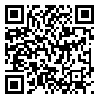BibTeX | RIS | EndNote | Medlars | ProCite | Reference Manager | RefWorks
Send citation to:
URL: http://payavard.tums.ac.ir/article-1-20-en.html

 , Fatemeh Nadali *
, Fatemeh Nadali * 
 1, Seyed Naser Ostad
1, Seyed Naser Ostad 
 , Farhad Zaker
, Farhad Zaker 
 , Shahrbanoo Rostamy
, Shahrbanoo Rostamy 
 , Hossein Dargahi
, Hossein Dargahi 

Background and Aim: Chronic myelogenous leukemia is characterized by Philadelphia (Ph) chromosome, the presence of BCR-ABL fusion gene and constitutive activation of the ABL1 tyrosine kinase. Despite an excellent result of target therapy by imatinib, some patients develop resistance to imatinib. In this study Efficacy of HESA-A on proliferation and apoptosis of K562 cell line was assessed.
Materials and Methods: In this study doubling time of K562 cell line was calculated. The cells were affected by various concentrations of HESA-A(1,2,4 and 8 mg/ml respectively). Cytotoxicity and IC50 dose of HESA-A were detected by MTT and trypan blue exclusion assay. Apoptosis was assessed by flowcytometry after 48 h cell treatment in the presence of IC50 dose.
Results: Doubling time of K562 cells was 24 hours. HESA-A reduced the number of viable K562 cells in a concentration dependent manner.IC50 dose was 3.5 mg/ml. In flowcytometry analysis of apoptosis, 19.22% of the treated cells were located in the position of the necrotic cells.
Conclusion: The results of MTT and trypan blue exclusion assay suggest that HESA-A inhibits the growth of k562 cells in a concentration dependent manner and induces necrosis in K562 cells.
| Rights and permissions | |
 |
This work is licensed under a Creative Commons Attribution-NonCommercial 4.0 International License. |



